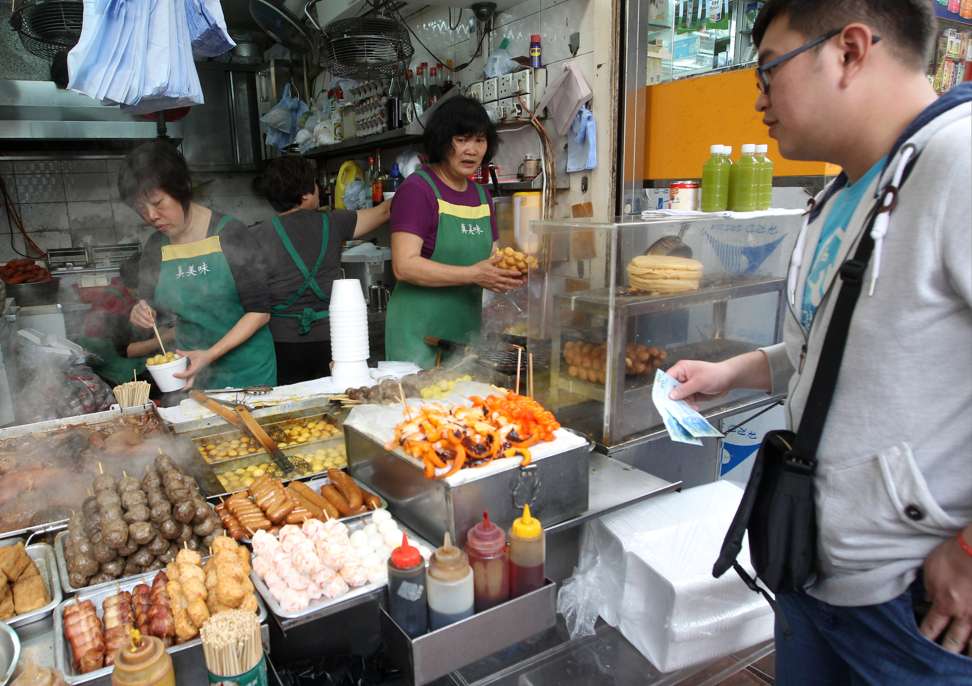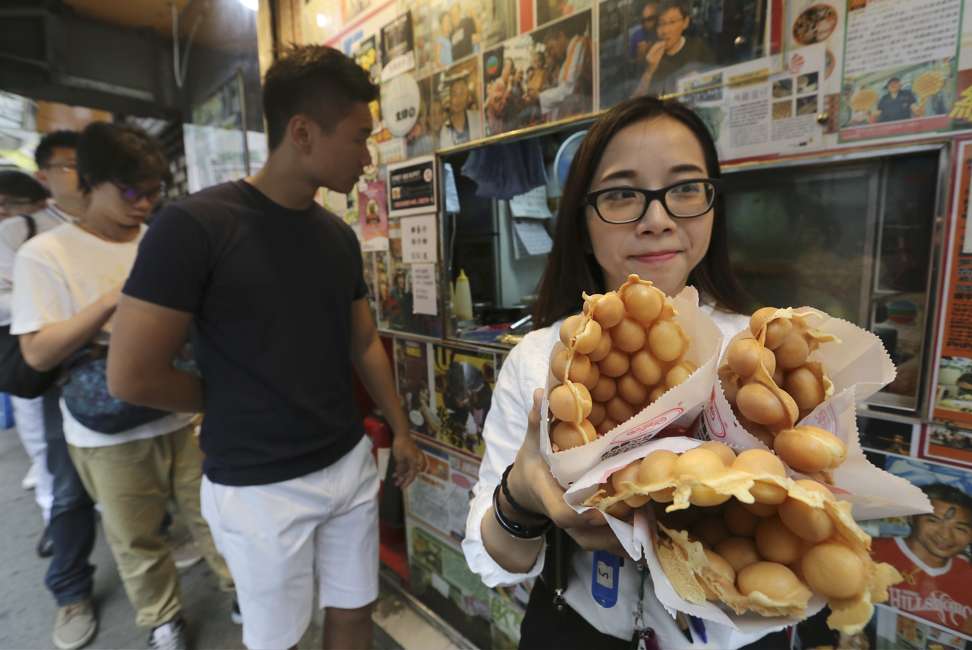
A guide to traditional Hong Kong street food
As London buzzes at the opening of a new bubble egg waffle café, City Weekend examines the evolution of traditional Hong Kong snacks, with help from extracts from A Tasty Guide to Hong Kong snacks by the Chinese Culinary Institute
Siu Maai
This popular Hong Kong dim sum snack is a type of dumpling, often made with ground pork, chopped shrimp and mushroom. A fish paste variety on a stick tends to be served at the city’s street food stalls. Other ingredients include onion, ginger, bamboo shoots, pepper and water chestnuts. It might be seasoned with sesame oil or rice wine. A thin sheet of lye water dough is used to cover the outside of the dumpling. Lau Chor-kwan, an instructor at the Chinese Culinary Institute, said siu maai can be covered with yellow or white edible wrappers according to personal preference.
Individual siu maai are often decorated with a distinctive orange flower shape of crab roe or diced carrot at the top centre of the cylinder dumpling. Siu maai might be eaten with chilli, satay or soy sauce. The Cantonese word “siu maai” literally translates as “to cook and to sell”. Culinary historians differ over when siu maai first emerged. In The Dim Sum Field Guide by Carolyn Phillips, it is said to have originated in the Yuan dynasty (1271 to 1368) in northern China, whereas others suggest it was served in Chinese teahouses as early as the Song dynasty (960-1279).

Cheong Fun
Also known as a rice noodle roll, this dim sum item is filled with either pork, beef, shrimp, vegetables or served plain. It is made from a strip of shahe fen (rice noodles) and generally seasoned with soy sauce. Chopped spring onions and toasted sesame seeds may also be added. The thin rice noodles are thought to have originated from the Pearl River Delta. Cheong Fun was served in Guangzhou teahouses during the Qing dynasty (1644 to 1912).
In the past, steamed rice rolls were typically served at congee shops, while pan-fried versions were only found in teahouses.
Lau said traditionally a steamed rice roll skin would be placed on a marble slab before being rolled up, but these days any flat surface, such as a plastic chopping board, will suit this purpose.
Fried “Three Treasures”
This Cantonese snack is available at both hot food stalls and dim sum restaurants. Typically, food stall vendors will offer you a choice of three to five small portions of meats and vegetables, such as red sausage, peppers, eggplant and tofu, which are then skewered onto a stick like a kebab. They are filled with a thin layer of al dente dace paste and then fried on a flat griddle until they are hot and crispy. Soy sauce, chilli sauce or mustard might be added for flavour afterwards. Meanwhile dim sum restaurants will normally just serve one item of the “Three Treasures” on a plate, typically green peppers stuffed with fish paste.
Leung Kin-sum, a senior instructor at the Chinese Culinary Institute, said the snack may have emerged when people from Shunde in Guangdong province set up roadside stalls in Hong Kong decades ago selling fried snacks which had been popular in mainland China.
Curry fishballs
Thought to have originated in the 1950s, these ground fishballs are a firm favourite in Hong Kong. Served in a sauce made from soy sauce and curry powder, they are sometimes made from crab meat and may be mixed with cheese or another meat. Tung Choi Street in Mong Kok, where Ladies’ Market is situated, is lined with stalls selling fishballs. They are particularly popular around Lunar New Year, when spherical food is recommended as a lucky food because the round shape signifies family togetherness. Traditional restaurants will sometimes make ordinary fishballs by hand and serve them with noodles after poaching them in seafood or chicken stock.

Squid or Octopus tentacles
The tentacles are boiled before either being roasted, grilled or deep fried. They are generally served at stalls on a stick. Their texture is generally chewy and rubbery.
Roasted sweet potatoes and chestnuts
One of the healthier Hong Kong snacks, this street food specialty is generally more popular in winter. Hawkers slow roast the chestnuts in hot cinders inside a large wok, while the sweet potatoes are often baked.
Ding Ding candies
Known in Cantonese as “Deuk Deuk Tong”, these sweets were made from maltose candy mixed with sesame and ginger. The hard maltose is melted in a pan, preferably a brass wok, before the flavourings are added. They are shaped into a square and put on a stick before they solidify. They now come in a variety of flavours, including chocolate, coconut, banana and strawberry. The word “deuk” refers to the chiselling required to break the candy into pieces, while “tong” translates as sugar or candy. It was also originally thought the noise made by breaking up the sweets might attract customers. Some Hongkongers suggest the excitement triggered in young children by the sound of the ding ding candies being prepared is equivalent to hearing an ice cream van’s song in Western societies.
Bubble egg waffles
Increasingly proving itself as Hong Kong’s most marketable snack, this local delicacy is made from an eggy leavened batter which is cooked between two hot metal plates, designed with semi-spherical cells inside. It is ideally cooked until golden brown and crispy on the outside, while remaining soft and light on the inside. It is often served plain but sometimes chocolate or fruit is added. Known in Cantonese as “gai daan tsai”, egg waffles’ origins remain unclear, but they reportedly emerged after the Second World War; hawkers are said to have bought damaged eggs and worked them into a batter in order to create a cheap snack. They were often prepared over a charcoal fire, giving them a smoky flavour.

“A Tasty Guide to Hong Kong snacks” by the Chinese Culinary Institute will be published in May 2017

